Why you can trust Tom's Hardware
Our HDR benchmarking uses Portrait Displays’ Calman software. To learn about our HDR testing, see our breakdown of how we test PC monitors.
OLEDs universally provide superb HDR and screens like the XG32UCWMG with a Uniform Brightness option do it even better. Not all monitors include this, and it gives Asus an advantage that is both visible and measurable.
HDR Brightness and Contrast
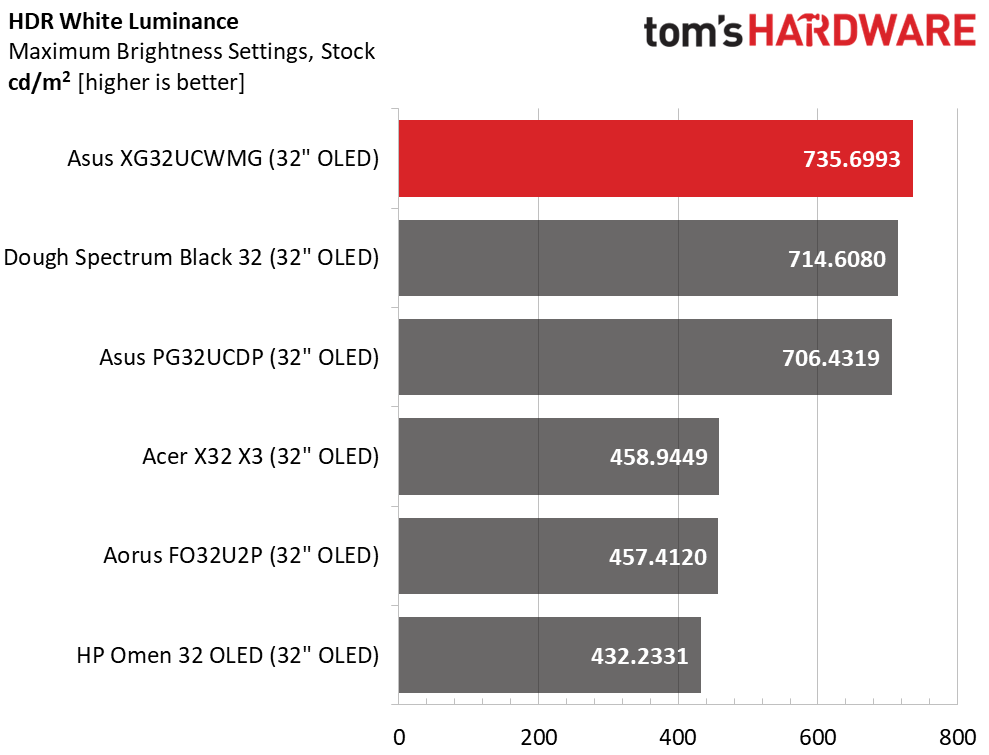
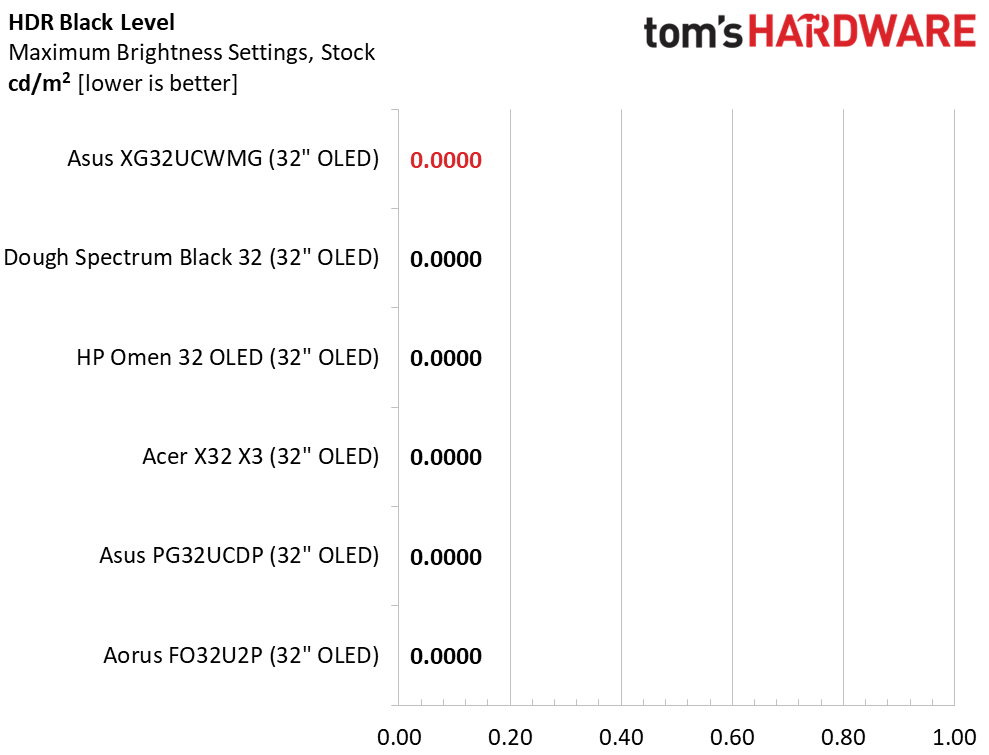
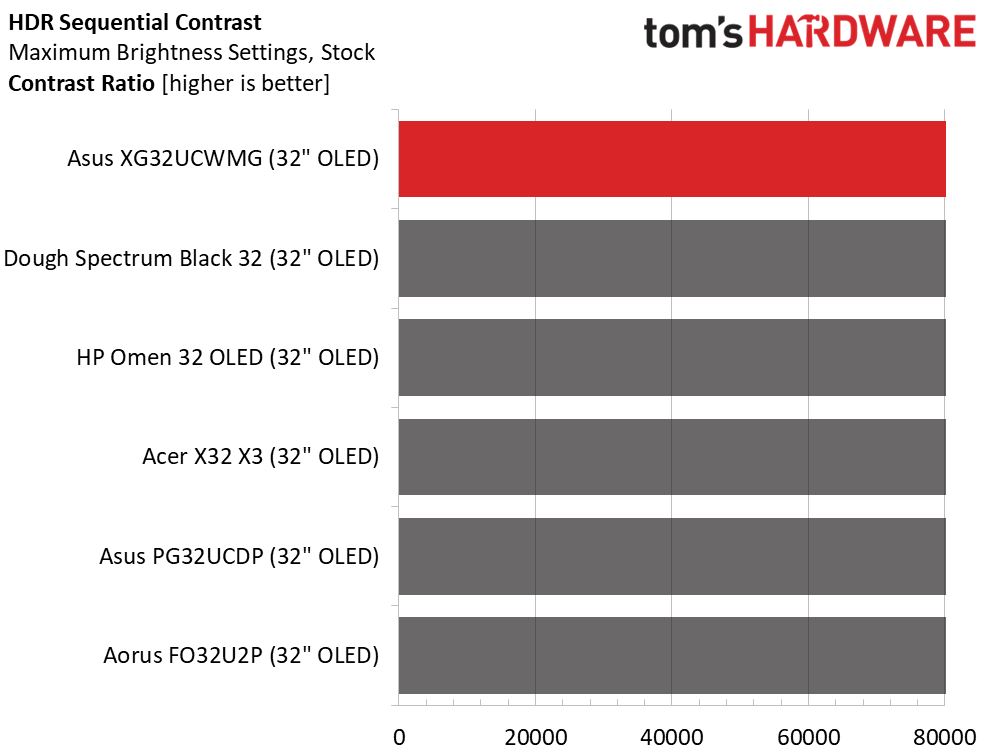
Asus claims 1,300 nits peak in HDR mode when measuring a 1% window pattern and my result of 735 nits from a 25% window supports that. The XG32UCWMG is one of the brightest OLED displays I’ve reviewed thus far. The only way you’ll see more light than this is from a Mini LED monitor. To achieve this number, I used the Gaming HDR mode. True Black mode tops out at around 488 nits. That’s very respectable because it’s a little brighter than other OLEDs without a Uniform Brightness option. Black levels and contrast cannot be measured.
Grayscale, EOTF and Color
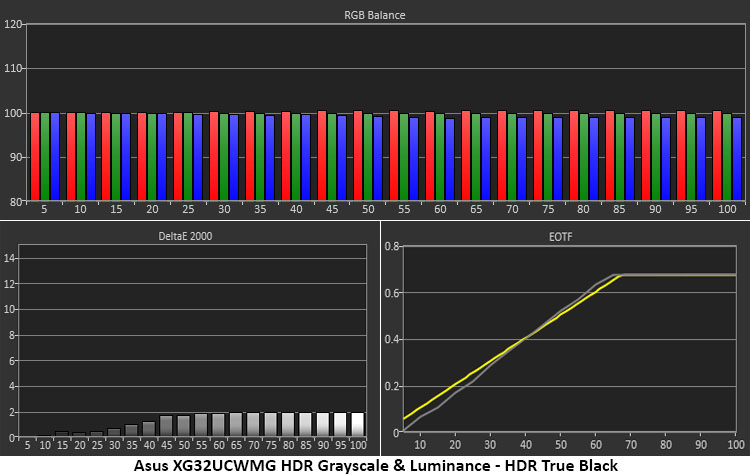
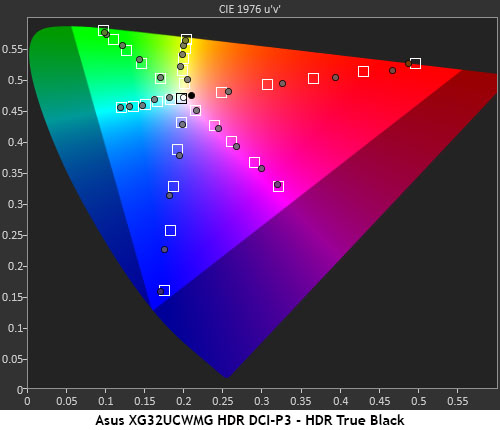
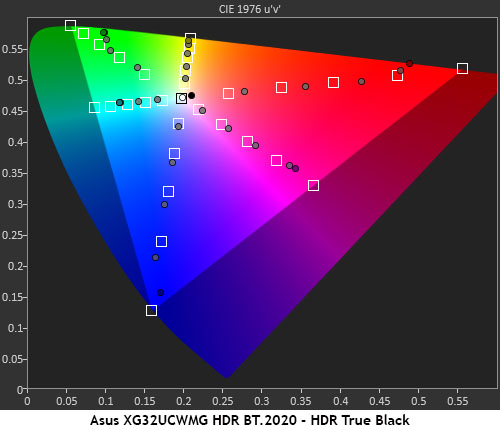
The XG32UCWMG’s most accurate HDR mode is True Black with nearly flawless grayscale and EOTF tracking. You can see slight variation below 30% where it’s a tad dark and above 60% where it's a tad light. But these errors are pretty much invisible in content. In Gaming HDR mode, you get brighter peaks and nearly the same accuracy, so there’s no downside to using it for all HDR content.
In the gamut test, the XG32UCWMG shows a bit of oversaturation in red and blue, with the rest of the gamut on point. The DCI-P3 gamut is fully covered. This is a little better than typical non-QD OLEDs because most others come up short in the green primary. In the BT.2020 test, color runs out at 85% red, 65% green and 95% blue.
Test Takeaway: The XG32UCWMG’s Uniform Brightness option, when turned off, gives it superlative HDR quality with a deeply textured image that has bright highlights. Peaks of 1,300 nits are something you can easily see when compared to a non-QD monitor. Though QD models have larger color gamuts, the difference in highlight brightness is a compelling element. I doubt anyone would complain once they see the XG32UCWMG’s gorgeous image.
MORE: Best Gaming Monitors
Get Tom's Hardware's best news and in-depth reviews, straight to your inbox.
MORE: How We Test PC Monitors
MORE: How to Buy a PC Monitor

Christian Eberle is a Contributing Editor for Tom's Hardware US. He's a veteran reviewer of A/V equipment, specializing in monitors. Christian began his obsession with tech when he built his first PC in 1991, a 286 running DOS 3.0 at a blazing 12MHz. In 2006, he undertook training from the Imaging Science Foundation in video calibration and testing and thus started a passion for precise imaging that persists to this day. He is also a professional musician with a degree from the New England Conservatory as a classical bassoonist which he used to good effect as a performer with the West Point Army Band from 1987 to 2013. He enjoys watching movies and listening to high-end audio in his custom-built home theater and can be seen riding trails near his home on a race-ready ICE VTX recumbent trike. Christian enjoys the endless summer in Florida where he lives with his wife and Chihuahua and plays with orchestras around the state.
-
-Fran- Now we just need to slap these into VR HMDs :DReply
Joking aside, I wonder how the ruling about OLED tech with Samsung will affect OLED's general pricing. A bit of a left-field comment, but I think it matters in the context of the review itself? I think?
Anyway, nice review! Thanks a lot.
Regards.
